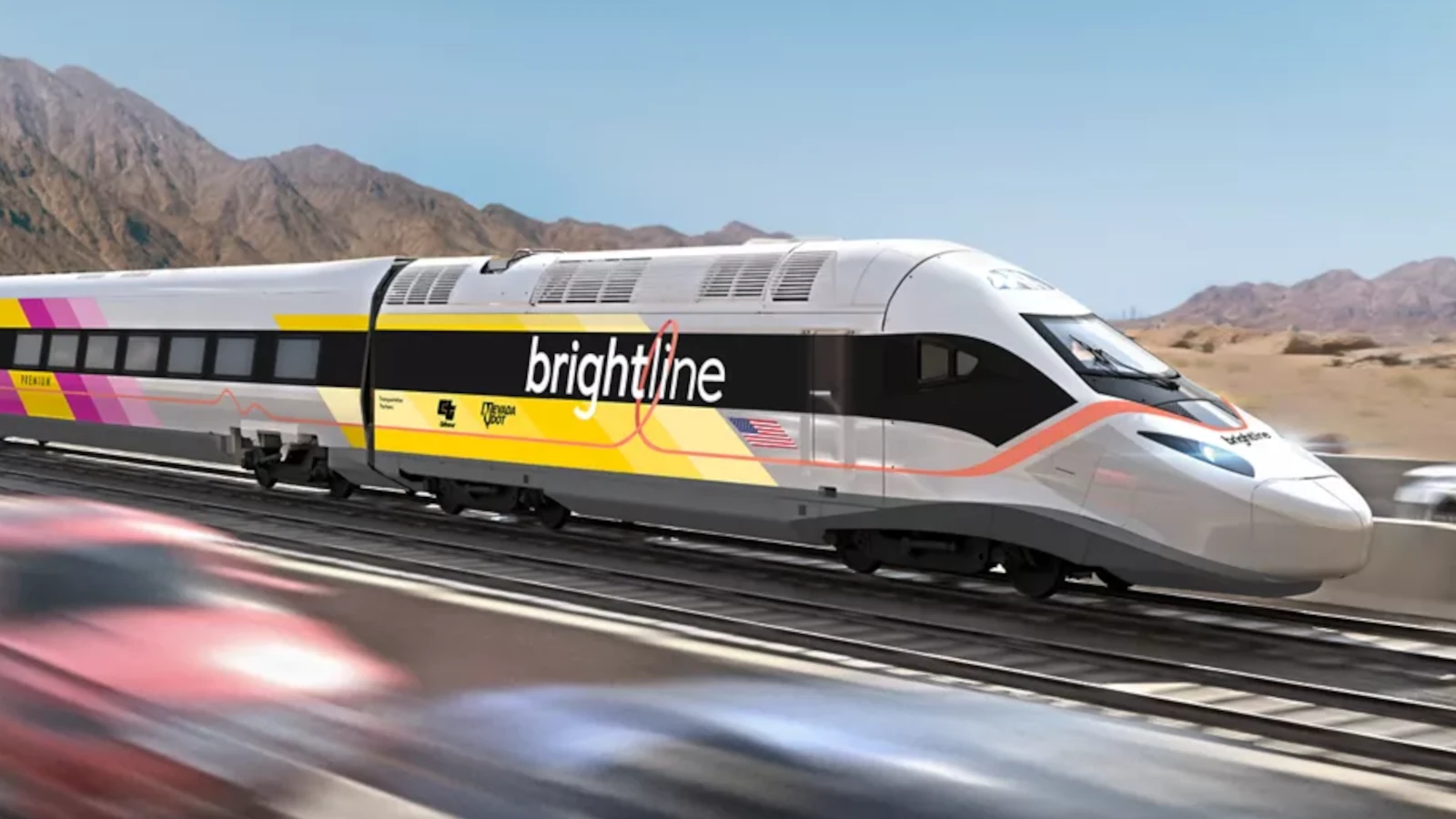The future of transportation in the United States could see a significant shift with the development of high-speed rail networks. Recent proposals and investments aim to introduce new high-speed rail lines, transforming how people travel across the country. Despite being slower to adopt high-speed rail compared to other developed nations, the U.S. is making strides in this area.
A proposed high-speed rail network could include routes between major cities like Las Vegas and Los Angeles, achieving speeds over 185 mph. These developments promise faster travel times, reduced road traffic, and lower environmental impact. With major projects like Amtrak’s upgraded Acela and Brightline’s Las Vegas to Los Angeles railway, the vision for a more connected and efficient transportation system is starting to take shape.
Key areas of focus include improving existing infrastructures and developing new routes that connect more regions. This progressive move may redefine daily commutes and interstate travel, making high-speed rail a cornerstone of future transportation.
Fast Track to the Future: High-Speed Rail in the USA
Projects in Progress
Brightline West: This privately funded project aims to connect Las Vegas with Southern California, promising a 90-minute journey with speeds up to 200 mph. Construction is underway and service is slated to begin as early as 2028.
California High-Speed Rail: This ambitious state-led project envisions a network connecting major cities across California. While facing delays and funding challenges, sections are under construction, with the initial segment in the Central Valley expected to open in the 2030s.
The Acela Express
Currently, the Acela Express, operated by Amtrak, is the only true high-speed rail service in the US, reaching speeds of 150 mph along the Northeast Corridor. Upgrades are underway to increase speeds to 160 mph with new trainsets.
Challenges and Opportunities
High-speed rail in the US faces obstacles like funding limitations, regulatory hurdles, and land acquisition challenges. However, the potential benefits are significant, including reduced travel times, less traffic congestion, and lower carbon emissions.
Public and Private Investment
Both public and private investment are crucial for the future of high-speed rail in the US. The federal government’s infrastructure bill includes funding for rail projects, and private companies like Brightline are demonstrating the viability of high-speed rail.
Vision for the Future
The vision for high-speed rail in the US is to create a network of interconnected lines that connect major cities across the country, offering a faster, more sustainable, and more efficient mode of transportation.
High-Speed Rail Projects in the US
| Project | Route | Speed (mph) | Status |
|---|---|---|---|
| Brightline West | Las Vegas – Southern California | 200 | Under Construction |
| California High-Speed Rail | San Francisco – Los Angeles/Anaheim | 220 | Under Construction |
| Acela Express (Northeast Corridor) | Boston/Washington, D.C. – New York City | 150 (upgrading to 160) | Operational |
Key Takeaways
- The U.S. is investing in high-speed rail networks.
- New projects may include routes like Las Vegas to Los Angeles.
- These initiatives aim to improve travel times and connectivity.
High-Speed Rail Development in the United States
The United States is making strides in developing high-speed rail networks. These efforts focus on infrastructure planning, investment, and impacts on the environment and economy.
Infrastructure and Route Planning
The high-speed rail projects in the U.S. include routes like California’s Central Valley, connecting Merced to Bakersfield. In Texas, a line from Houston to Dallas is planned. Las Vegas to Los Angeles service through the Brightline West project aims to cut travel time between these cities significantly. The Northeast Corridor, from Boston to Washington, D.C., is another key focus. Amtrak’s expansion includes new routes like Atlanta to Chattanooga, and North Carolina to Virginia.
Brightline is expanding in Florida, linking Orlando to Miami. The Cascadia project aims to connect Vancouver to Portland. These routes will serve major cities and provide faster, more efficient travel.
Government and Private Investments
Building the high-speed rail network requires substantial funding. The federal government is investing billions through grants and loans. Private companies like Brightline contribute with projects such as the Las Vegas to Los Angeles route and the expansion in Florida.
California’s high-speed rail project has received federal loans and state funds. Texas Central is a private venture working on the Houston to Dallas route. Federal funds are essential for Northeast Corridor upgrades and new lines in the southeast.
Public-private partnerships play a key role in advancing these projects. Investments from both sectors aim to create efficient and modern rail services across the country.
Environmental and Economic Impact
High-speed rail promises significant environmental benefits. Trains produce fewer greenhouse gases compared to cars and planes. Reduced traffic congestion lowers pollution levels in major cities. Projects like California’s Central Valley and Brightline’s Las Vegas to Los Angeles routes aim to cut emissions and improve air quality.
Economically, high-speed rail can stimulate job growth in construction and operations. New stations like in Bakersfield and Merced can boost local economies. Faster travel time opens opportunities for business and tourism.
High-speed rail development also supports housing projects near stations, potentially lowering urban sprawl. Efficient rail networks can lead to long-term economic and environmental gains, shaping a sustainable future for transportation.
Frequently Asked Questions
The future of high-speed rail in the U.S. is promising, with several new projects and significant investments aimed at improving transportation infrastructure. The following FAQs address the main aspects of these developments.
What are the current high-speed rail projects underway in the United States?
Several high-speed rail projects are progressing across the country. Brightline West is constructing a line connecting Las Vegas and Los Angeles. California’s state project aims to connect major cities like San Francisco and Los Angeles.
How does the High-Speed Rail Act 2024 impact the development of railway infrastructure?
The High-Speed Rail Act 2024 provides federal funding and policy support. This act prioritizes fast rail services and aims to modernize the current rail network, making it more reliable and efficient.
What are the projected timelines for the completion of the California high-speed rail service?
The California high-speed rail project has phased goals. The initial segment connecting Merced and Bakersfield is expected to be done by 2029. Full service between San Francisco and Los Angeles is anticipated by 2033.
How will the American high-speed rail network integrate with existing Amtrak services?
High-speed rail in the U.S. will complement Amtrak’s current services. Plans involve sharing some corridors where possible, improving transfer points, and enhancing overall service efficiency for passengers.
What investments are being made to improve intercity passenger rail services?
Investments include federal and state funds directed at upgrading tracks, signaling systems, and stations. New trainsets designed for higher speeds and better comfort are also part of these improvements.
What benefits are expected from the expansion of high-speed rail in the U.S.?
Benefits include reduced travel times, decreased traffic congestion, and lower carbon emissions. High-speed rail also aims to boost local economies by connecting cities and regions more effectively. It can provide a viable alternative to air travel for many regional trips.







